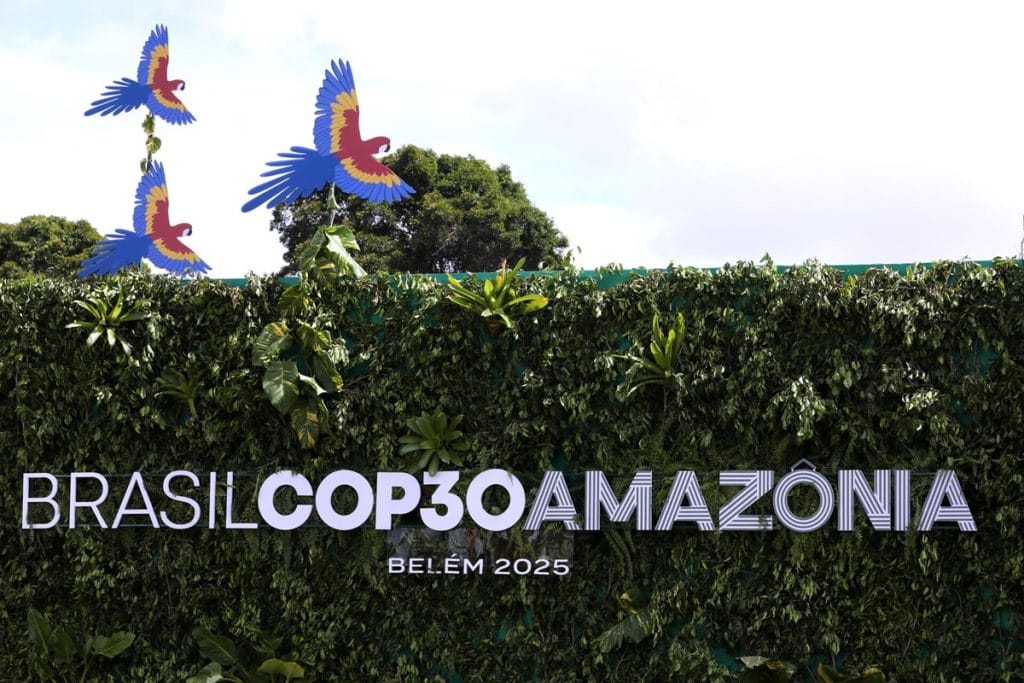COP30: Day 7 Recap

- More than 30 announcements in Week 1, including the $5.5 billion Tropical Forest Forever Facility and the Belém Declaration, have set an implementation-heavy agenda at COP30.
- A USD 1.8 billion land-tenure commitment and new forest-finance instruments bring Indigenous and Afro-descendant rights into the center of climate governance.
- Adaptation finance, methane reductions, and the emerging bioeconomy dominate political negotiations as talks shift from technical work to high-stakes decisions.
Week 2 Opens with Forests, Rights, and Finance
COP30 enters its political phase with a decisive turn toward nature as the foundation of climate action. After a first week packed with more than 30 announcements spanning energy, finance, culture, and carbon markets, negotiators face a compressed timetable to close consensus on adaptation, just transition priorities, and global climate finance.
The mood among delegates is focused but blunt. As one negotiator noted, “the game is played until the very last moment.” With many of the 145 agenda items already agreed at the technical level, ministers now inherit a landscape where the most contested decisions remain.
Nature sits at the front of that agenda. Forest protection, land rights, and community-driven stewardship have become the anchor for Week 2, with leaders elevating nature-based solutions as essential to global progress.
Forest Finance Takes Center Stage
A central pillar of today’s discussions is the high-level dialogue on forest finance, building on the Tropical Forest Forever Facility (TFFF), announced at $5.5 billion during Week 1. The initiative aims to help tropical forest countries align conservation goals with economic development by creating long-term financial incentives.
Several governments have begun coordinating contributions to the Adaptation Fund, framing the mechanism as a direct route to climate resilience for nations most exposed to extreme events. The shift reflects a growing recognition that adaptation must be financed at scale, not merely piloted through fragmented programs.
Diplomats say momentum is accelerating precisely because the stakes are widening. Forest loss is tied not only to emissions trajectories but also to food systems, rural economies, and cultural heritage. As one delegate put it, “keeping forests standing is no longer a side conversation — it is the economy conversation.”
Indigenous and Afro-Descendant Leadership Moves Up the Agenda
COP30 is also seeing a structural change in how Indigenous voices shape governance. A USD 1.8 billion land-tenure pledge has been introduced to strengthen rights for Indigenous Peoples and Afro-descendant communities, anchoring nature protection to those who have managed ecosystems for generations.
The day’s discussions include a high-level roundtable on Indigenous governance and its role in emerging climate-finance mechanisms. Leaders in the room are expected to push for safeguards that link finance to rights-based stewardship rather than top-down control.
RELATED ARTICLE: COP30: Day 5 Recap
Alongside this, sessions highlighting Afro-descendant leadership are bringing renewed attention to the intersection of biodiversity, social equity, and economic development. Delegates anticipate sharper calls for transparency on how finance flows to communities rather than intermediaries.
Methane, Markets, and the New Bioeconomy
The Global Methane Pledge Ministerial follows a week of announcements on sustainable fuels, energy-transition partnerships, and carbon-market reforms. Ministers are expected to assess practical pathways for reducing methane emissions in agriculture, energy production, and waste — sectors that are politically sensitive yet central to near-term warming trajectories.
Another focal point is the launch of the Bioeconomy Challenge, which aims to convert G20 principles into real-world pathways for a “global sociobioeconomy.” The effort seeks to link science, Indigenous knowledge, and new investment models to create economic value that is tied to ecosystem protection rather than extraction.
Diplomats describe the bioeconomy agenda as one of COP30’s most promising areas for private-sector engagement. For investors and corporates, it opens a field where climate, biodiversity, and economic opportunity converge.
What Executives and Investors Should Watch
For C-suite leaders tracking climate-policy exposure, Week 2 offers several critical signals:
• Forest finance is evolving quickly, with long-term capital instruments emerging as anchors of national climate strategies.
• Rights-based governance is becoming inseparable from climate finance, raising the bar for due diligence across nature and land-use investments.
• Adaptation finance is moving beyond declarations toward coordinated pledges, a shift that could reshape global development flows over the next decade.
• Methane reduction — a low-cost, high-impact mitigation area — is consolidating into a regulatory priority with implications across agriculture, food, and energy supply chains.
A Turning Point Rooted in Nature
As ministers negotiate the most complex chapters of the COP30 agenda, nature has become both the political and moral center of the talks. Forest protection, Indigenous leadership, and adaptation finance are no longer side components of global climate strategy. They are the conditions that determine whether long-term commitments can translate into measurable outcomes.
The test for Week 2 is whether political momentum can match the ambition seen in early announcements. For a COP defined as the Implementation COP, the answer will shape not only the final outcome in Belém but also the credibility of global climate governance heading into the next cycle.
Follow ESG News on LinkedIn








